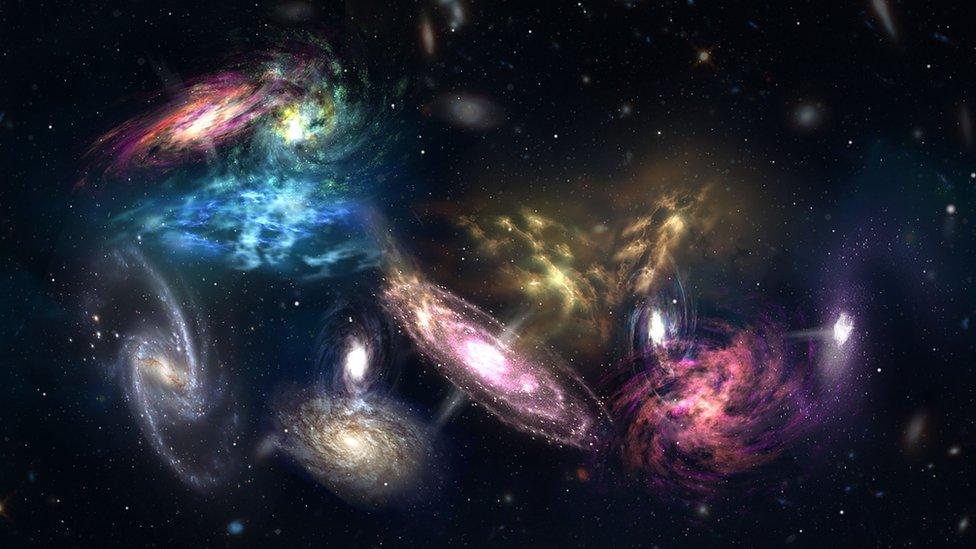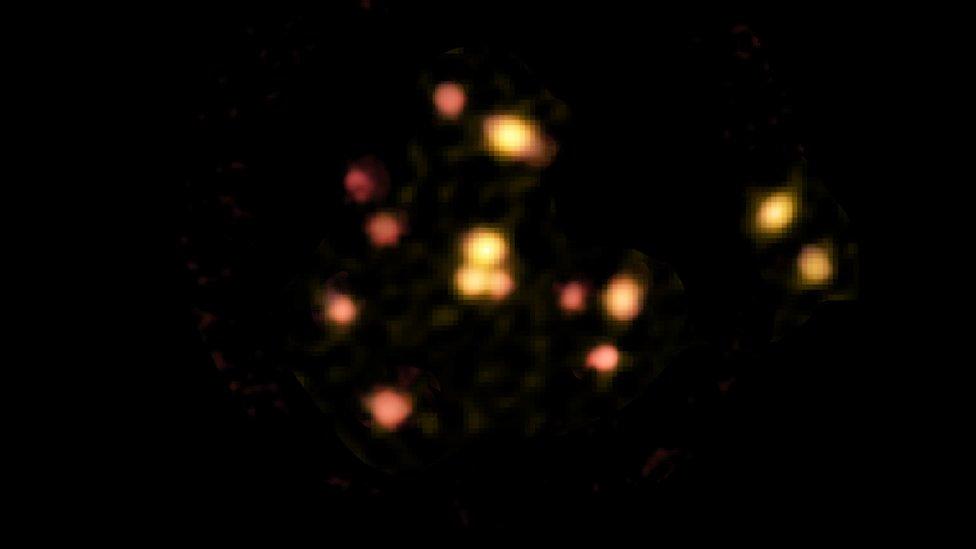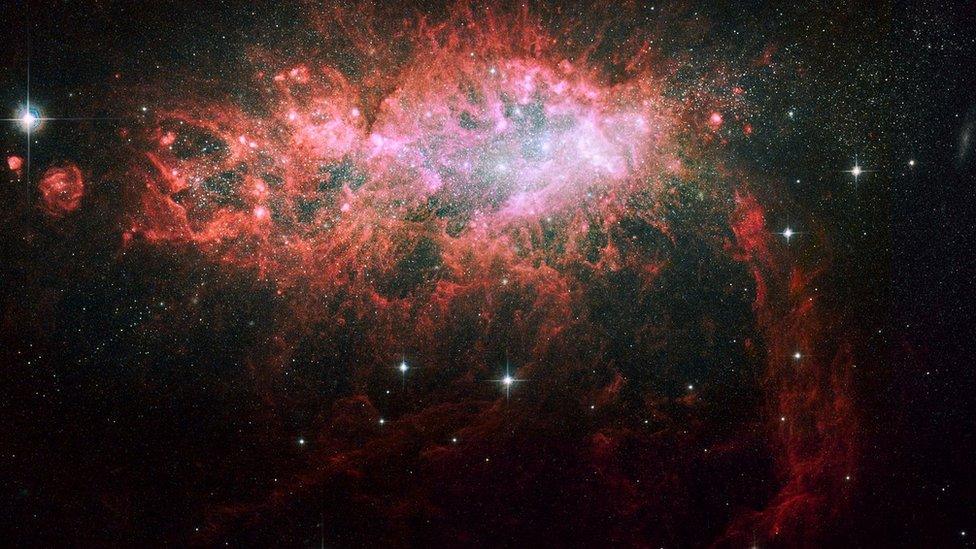'Ground-breaking' galaxy collision detected
- Published

An artist's impression of the 14 galaxies detected
Scientists have detected a cosmic "pileup" of galaxies in the early Universe.
Imaged almost at the boundary of the observable Universe, the 14 unusually bright objects are on a collision course, set to form one massive galaxy.
This will in turn serve as the core for a galaxy cluster, one of the most massive objects in the Universe.
The catch? This all happened over 12 billion years ago.
Looking this far across the Universe is essentially looking back in time, as the light has taken many billions of years to reach us.
The galaxies would have been in their observed configuration when the Universe was a mere 1.4 billion years old.

The galaxies are set to collide and merge
Originally detected in a wide sky survey using the South Pole Telescope, the objects surprised astronomers as they were clustered so close together.
"We found it originally as a bright point source in the survey," explained Yale University's Tim Miller, an author on the study published in Nature.
"I don't think we were expecting something quite this spectacular but we knew it had to be exciting."
Star nurseries
Known as starburst galaxies, the objects are extremely bright as they are forming stars at a high rate - up to 1,000 times as fast as the Milky Way.
Professor Caitlin Casey, who was not involved in the study, described the findings as "extremely unusual."
"We often get excited when we find just two galaxies like this grouped together, because each one is already quite unusual and rare compared to 'normal galaxies', forming stars several hundreds or thousands of times faster than the Milky Way. To find fourteen such starbursts all grouped together is unheard of," the University of Texas at Austin researcher commented.

Starburst galaxies like NGC 1569 are regions of accelerated star birth
Crowded neighbourhood
The group occupy a region of space just four or five times the size of the Milky Way, making it incredibly dense.
"If you put all the planets into the orbit between the Earth and Moon, it's the same sort of scale of mass concentration," explained Dr Axel Weiß, a co-author on the study.
The question of why such a concentration of galaxies was able to evolve in this location, and so early in the Universe's history, remains unanswered for now.
"This is just so early. This is before the peak of star formation," says Miller.

About one star forms every year in the Milky Way
A long way to here
So what have these galaxies gotten up to in the intervening billions of years?
By now, models predict that they would have coalesced to form the core of an even more massive cluster.
Miller explains that in the present day, astronomers expect the structure would be as massive as the Coma Cluster.
Stretching across two degrees of the night sky, or over four times the visible space occupied by the full moon, the Coma Cluster is truly a giant.
"The uniqueness of the Coma Cluster is it's one of the most massive structures we know about in the whole local Universe. [It has about] 10,000 billion solar masses. It's the most extreme structure that we know about," explained Dr Weiß.
Thus far, very few of these large galaxy clusters have been detected, but work continues on further candidates.

The Coma Cluster contains over 1,000 galaxies
Dr Weiß, who was involved in another study which revealed a similar cluster of ten galaxies, says that there are some other candidates.
"[Though] these are certainly the most extreme ones," said the Max Planck Institute for Radio Astronomy scientist.
Dr Amy Barger, from the University of Wisconsin-Madison found the work to be "ground-breaking."
"Finding the progenitors of present-day massive clusters has always been of great importance for piecing together when and how structure grows in the Universe," she told BBC News.